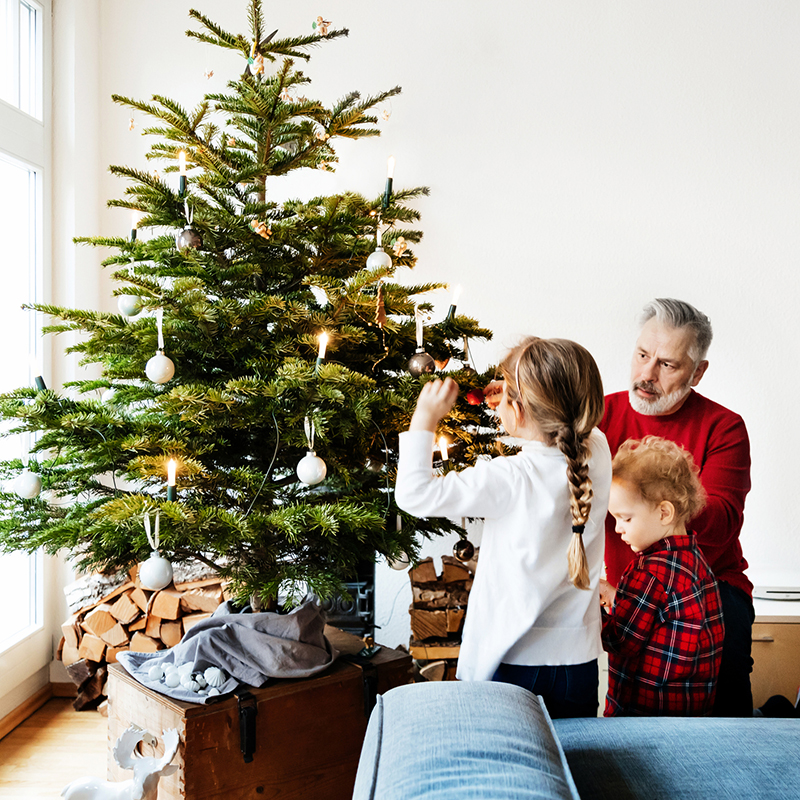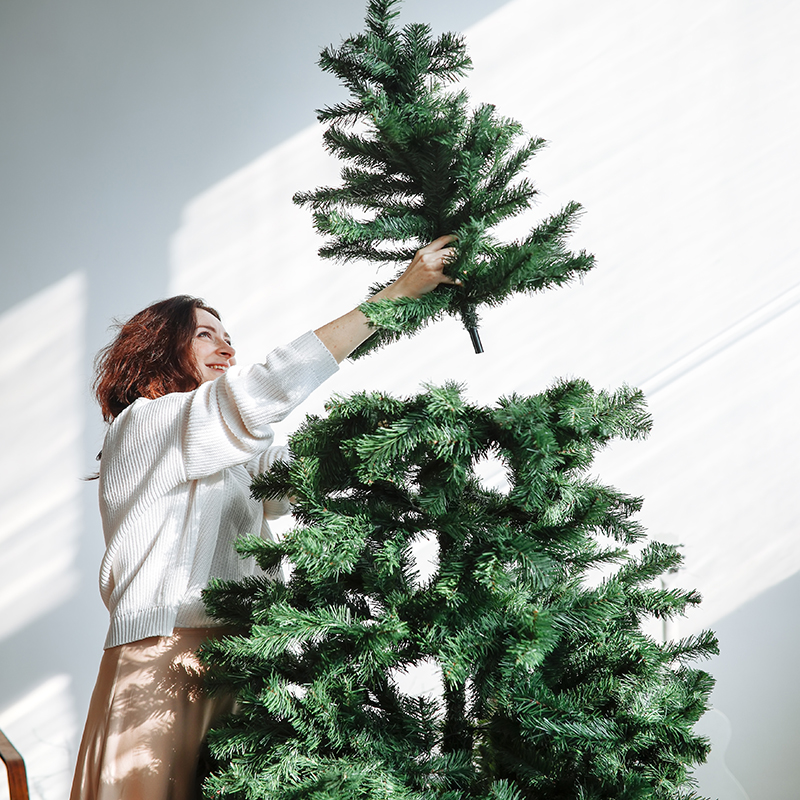
It’s not like you need to make more decisions to make this time of year: What should I give my kids’ teachers as a holiday gift? What apps should I serve with my holiday meal? Should I go on a vacation or stay home? But here’s another choice you may consider when it comes to the holiday season: Should your Christmas tree be real or faux?
These days, the options for artificial Christmas trees are bountiful, which could make your decision more difficult if your heart had been set on real pine. So, we asked two New Jersey experts—the owners of Anne Ellen Christmas Tree Farm in Manalapan and Keris Tree Farm & Christmas Shop in Allentown—to share the pros and cons of both types of trees that will hopefully help you decide on the best one for your home and your family:

Real Christmas trees
The pros: Does anything scream Christmas like the scent of real pine? “Real trees emit a wonderful, fresh pine scent that can fill your home with a delightful fragrance throughout the holiday season,” says Jack Sangillo, manager of Anne Ellen Christmas Tree Farm. Additionally, selecting your tree at a local farm, cutting it down, hauling it home and setting it up is a cherished family tradition that you won’t get from buying a boxed artificial tree at a store. But here’s a fun fact: Some people may not know that real trees benefit not just local agriculture and small businesses, but the environment too. “One acre of Christmas trees provides 13 people enough oxygen for a day,” notes Margaret Keris of Keris Tree Farm & Christmas Shop. “The trees allow for green spaces, provide habitat for wildlife and create a more balanced ecosystem. Real trees are a sustainable option as they are replanted year after year.”
The cons: Real trees make a mess; they tend to shed needles all over the floor, especially as they dry out. Plus, as with any living plant, there’s maintenance involved. “Keeping a real tree fresh requires consistent watering and maintenance to prevent it from drying out and shedding needles,” says Sangillo. “Real trees have a limited lifespan and can only be enjoyed for a short period of time.”

Artificial Christmas trees
The pros: If you don’t want to deal with a mess or maintenance, faux is the way to go. “Artificial trees don’t require watering and they can be placed anywhere in a home without running the risk of drying the tree out,” says Sangillo. You also won’t need to handle the hassle of hanging up string lights yourself, as many artificial trees also come pre-lit, he notes.
The cons: Whereas real trees help the environment, artificial ones have the opposite effect, notes Keris. “Manufacturing processes increase the need for fuel, transportation and plastics,” she says. “These trees can be reused but often will only last a certain number of years, and sometimes the lights need to be replaced too.”
New Jersey’s trees
If you go the real tree route, Keris says a popular type to consider is the Concolor Fir, “a wonderfully fragrant option for a real Christmas tree in our climate,” as well as “Canaan Fir, which has an old-world Christmas look, or blue spruce and Norway spruce, which are fuller in shape.” Sangillo says the Norway spruce is a popular option you can cut yourself. “They tend to grow really well in New Jersey and have a dark green color that our customers love,” he says. Pre-cut trees sold at Anne Ellen Christmas Farm aren’t grown in New Jersey, but they’re also good options and they’re the species often associated with the holidays: Balsam, Fraser and Noble Fir.
Real tree maintenance
The base of a real Christmas tree trunk should always be submerged in a stand filled with about 1 gallon of water to prevent them from drying out and dying right away, our experts emphasize. The scientific explanation for this is that “if the water line in your tree stand falls below the stump, the sap could block the capillaries in the tree base and not drink water,” says Keris. To ensure the tree gets as much water as it needs, you can even re-cut the trunk at least an inch from the bottom before you set it up, Sangillo adds. “This is especially important if it has been several hours or days since the tree has been cut.” Put your tree in a shady, unheated area (away from fireplaces and vents). With these tips, your tree should last in your home for two to three weeks.
What type of tree do you prefer and why? Tell us on Instagram @njhomemag.